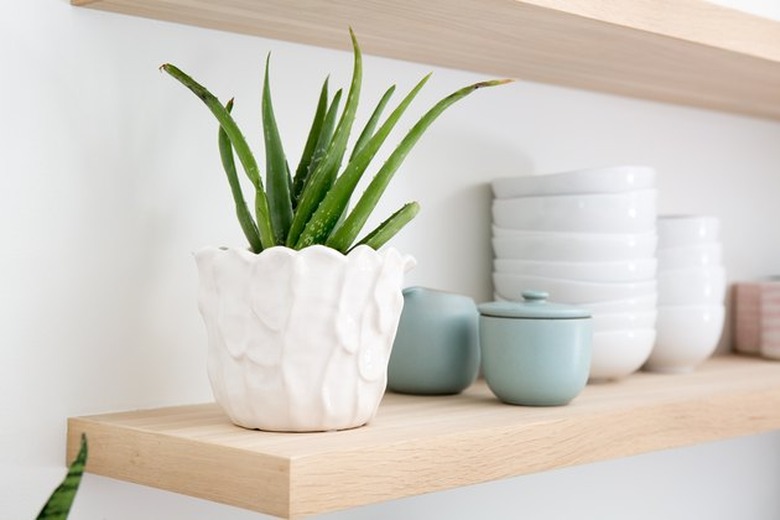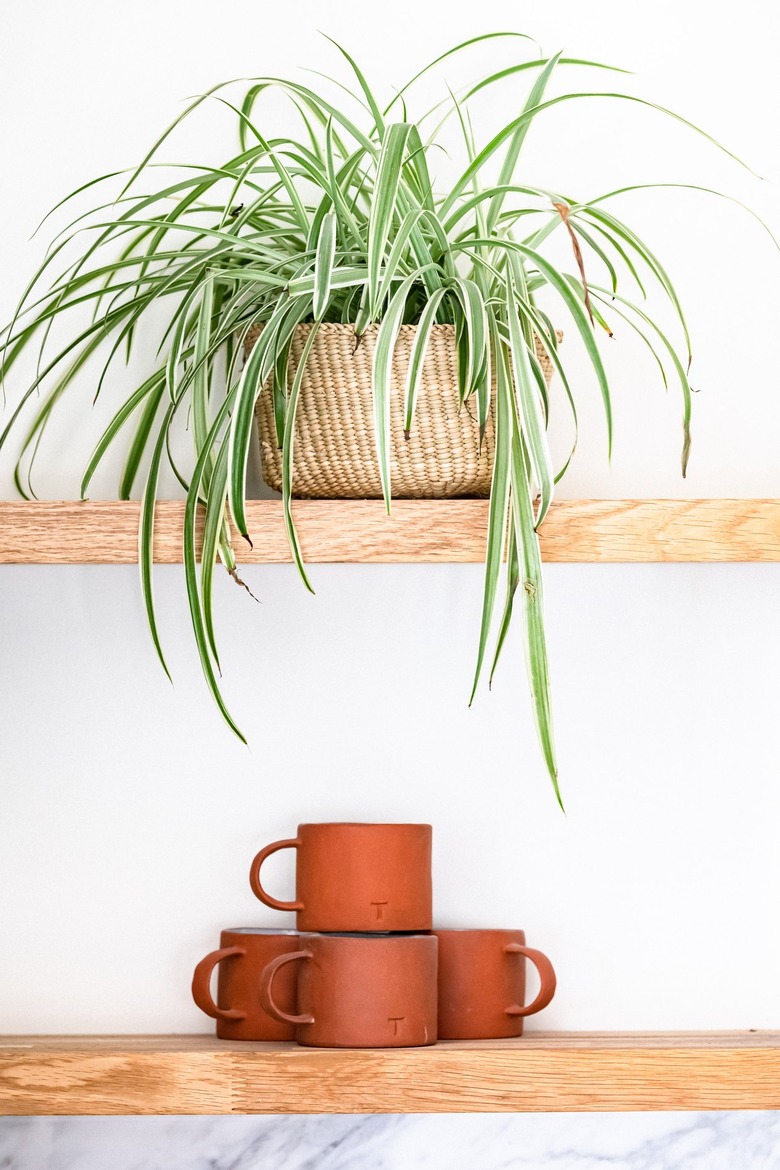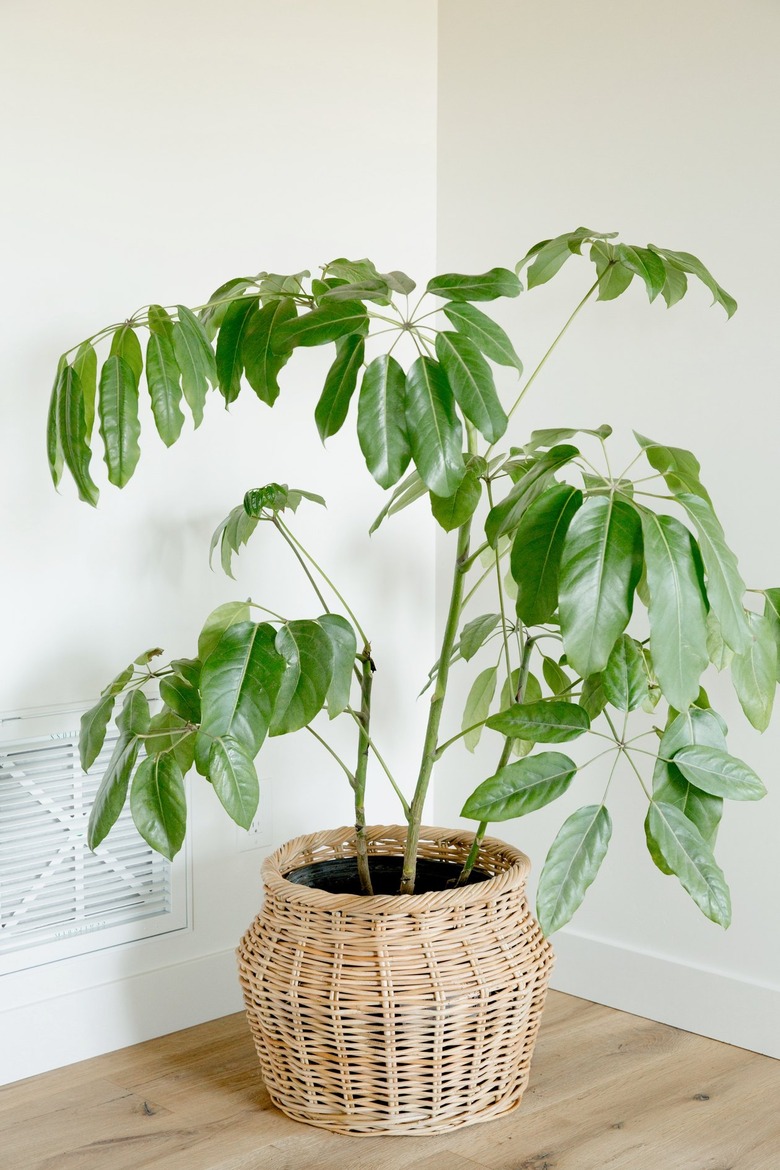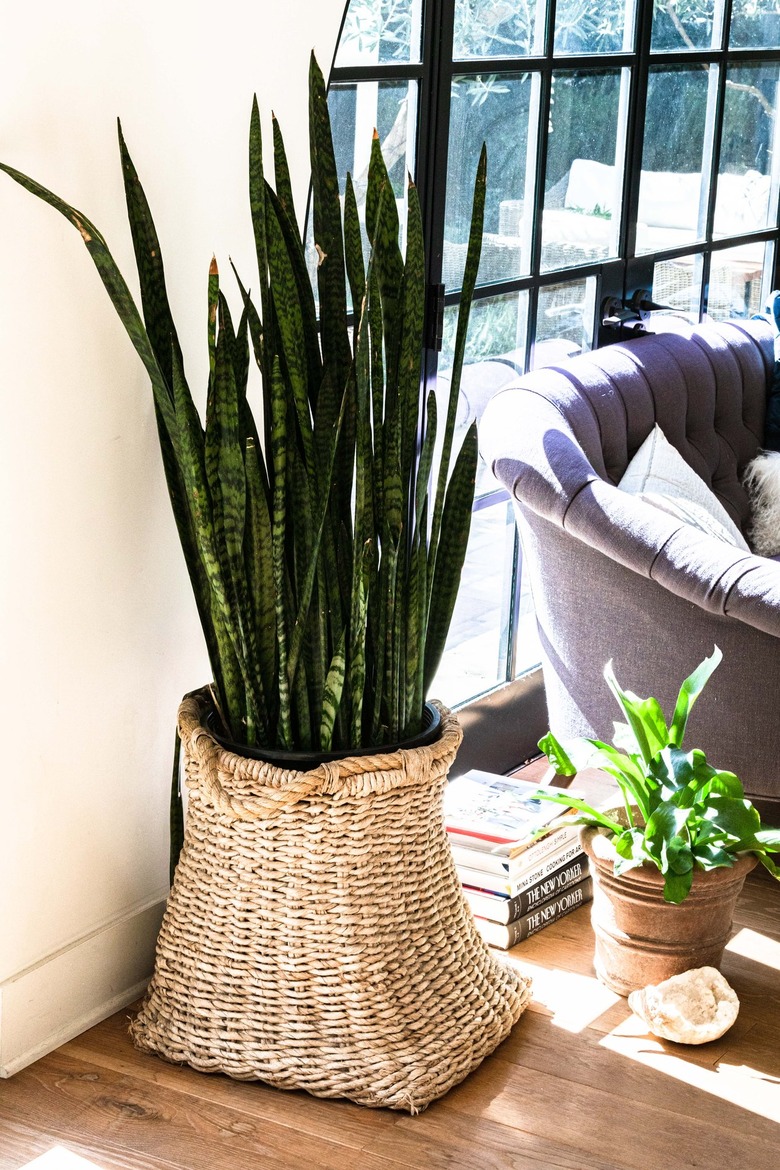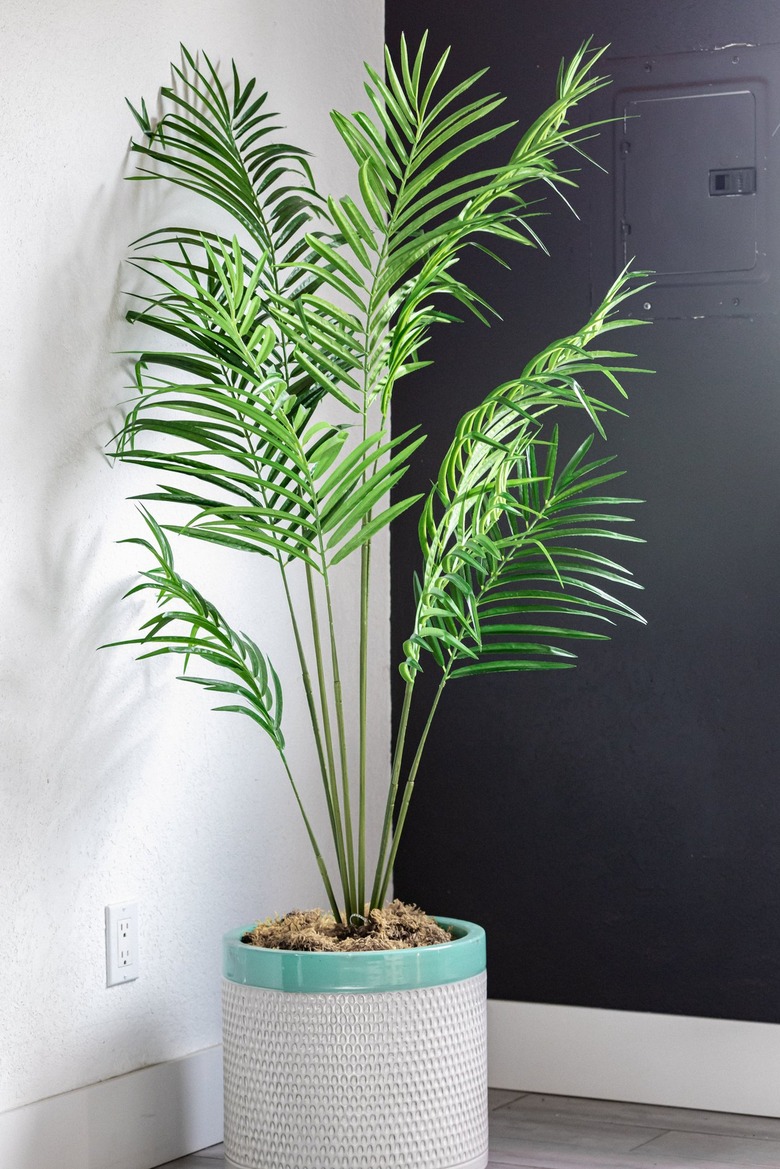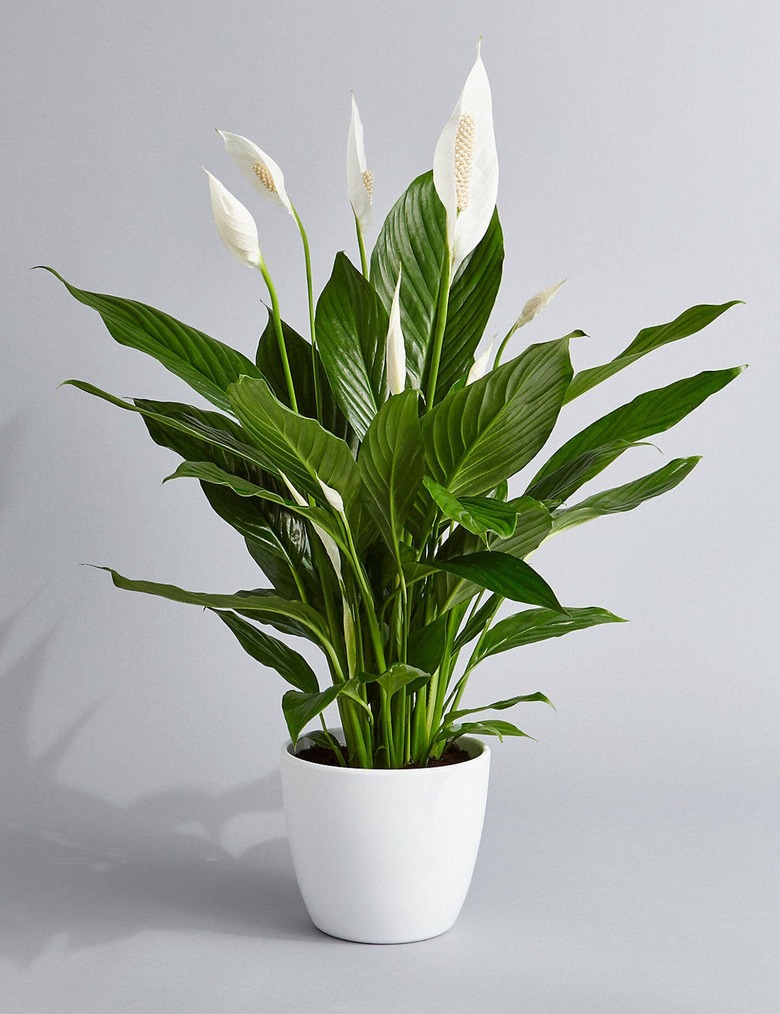6 Houseplants That'll Cool Your Home Naturally
Did you know that there is a way to cool your home that won't spike your electrical bill? We're talking houseplants: they are an easy, natural, and low-cost way to help when things heat up indoors. Plants can reduce the temperature in a room by up to 10 degrees, according to the USDA, because they transpire just like humans sweat.
Think about walking into a forest, how the air seems to cool noticeably. NASA says that when plants transpire, they cool themselves and the air around them. Here's how: the plant takes up water and nutrients through their roots, and then some of that water is "sweated out" of the plant through pores in the leaves, called stomata, removing heat from the air.
So when you want cooler air in your house, bring on the houseplants. Some are better than others as far as cooling properties, so consider this short-list.
1. Spider Plant (Chlorophytum comosum)
1. Spider Plant (Chlorophytum comosum)
The more leaves, the more transpiration. It just makes sense. And few plants have more leaves than the popular spider plant. The leaves are slender and long and flower gracefully over the side of a hanging basket. These houseplants also grow babies on long, leafless stalks.
Spider plants not only cool the air in your living room, they also clean and eliminate volatile organic compounds (VOCs) from the air. These are airborne chemical toxins emitted by building materials, furniture, and cleaning supplies.
Plant care: Among the easiest plants to care for, spiders are great for green thumbs and brown. These houseplants grow in either bright or low light as long as they have well-draining soil and get adequate water.
Our pick: 36Vine Spider Plant, $26
2. Aloe Vera (Aloe vera)
2. Aloe Vera (Aloe vera)
If you cut an aloe branch to smear the gel on a sunburn, you feel its cooling power. But aloe vera plants can cool more than sunburns. They are also superstars at cooling air temperature as well as removing formaldehyde and benzene from the air. They absorb carbon dioxide and then release cool oxygen back into the air.
These plump-leafed succulents have leaves that look like pointed "fingers" growing in a rosette form. Like other succulents, they store water in their thick leaves, making them drought tolerant.
Plant care: Another perfect beginner's plant, the aloe forgives almost any neglect as long as you don't leave them sitting in wet soil. Think well-draining soil and a pot with plenty of drain holes. Aloe prefers a sunny location and weekly irrigation, but it accepts lower-light and less water.
Our pick: Plants.com Aloe Vera, $29.99
3. Weeping Fig Tree (Ficus benjamina)
3. Weeping Fig Tree (Ficus benjamina)
Weeping fig are graceful and delightful houseplants like their relatives, fiddle-leaf fig trees. And they are popular. There are likely more weeping fig trees as houseplants than any other species of tree. They delight with the romantic look of hundreds of bright green leaves.
Ficus trees help to keep the air inside your room moist and cool, and are a real boon in the hot summers. Those numerous coin-shaped leaves transpire at a high rate, creating a cool, moist atmosphere. For maximum cooling, select a tree with a tall trunk and a large canopy.
Plant care: Weeping figs like sun, but not direct sun. Position your ficus in indirect light and water it frequently and well.
Our pick: California Tropical Ficus Benjamina, $17.99
4. Snake Plant (Sansevieria trifasciata)
4. Snake Plant
(Sansevieria trifasciata)
Here's another easy-care plant that cleans and purifies the air. Commonly called the snake plant or mother-in-law's tongue, sansevieria is a succulent with upright, belt-like leaves with sharp tips.
This succulent's leaves store water just like aloe's, and it transpires at a high rate. It absorbs carbon dioxide during the day and releases cool moisture at night. That means a snake plant in the bedroom is a great way to get a good night's sleep. Snake plants are also good at removing toxins like benzene and formaldehyde.
Plant care: Snake plants give spiders and aloe a run for their money for the title of easiest houseplant to care for. They thrive on neglect, growing happily in low light or sun. Water every three or four weeks.
Our pick: Bloomscape Snake Plant, $149
5. Areca Palm (Dypsis lutescens)
5. Areca Palm
(Dypsis lutescens)
Another great plant to cool your home is the areca palm tree, popular for its gorgeous, feathery fronds. While used largely for decoration, this leafy palm also removes trichloroethylene and formaldehyde from the air. It also transpires a lot, acting as a natural air conditioner and humidifier.
While one areca is lovely, a small collection of palms are a delightful addition to a living room and creates a small, indoor rainforest. The palms make your home look tropical but cool the air when it's hot out there.
Plant care: The areca palm is utterly lovely, but not quite as easygoing as some of the air-cooling succulents. Areca palms like mild temperatures. Place them in indirect light in a spot where they won't be surprised by a cool draft. Palm trees need regular irrigation and well-draining soil.
Our pick: American Plants Areca Palm, $28
6. Peace Lily (Spathiphyllum wallisii)
6. Peace Lily (Spathiphyllum wallisii)
The peace lily is a striking tropical plant with large emerald leaves, reason enough to invite it into your home. Its stand-out white flowers are actually spathes protecting the smaller inner flowers, making the houseplant a great choice for a serene and tranquil environment. But make no mistake, this is a tough plant and listed by NASA as a tip-top air purifier.
Remember that the more leaf surface a plant has, the more moisture it releases. The huge lush leaves make this plant invaluable for cooling the air in a living room or bedroom.
Plant care: In the wild, peace lilies live on the floor of tropical forests where they get dappled sunlight and consistent moisture. The closer you can come to duplicating these conditions in your house, the happier and healthier your lily is likely to be. Mist the air in your house if the air is dry.
Our pick: Pretty in Green Plants Peace Lily, $24
